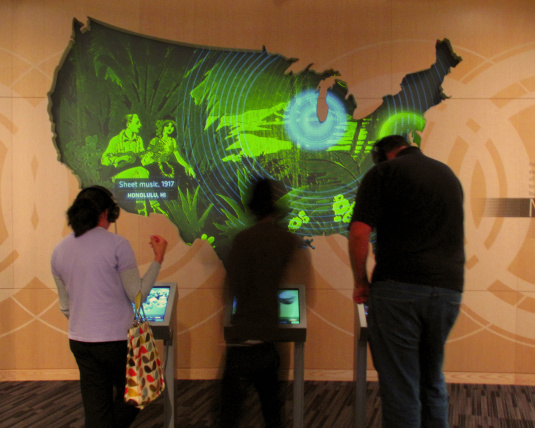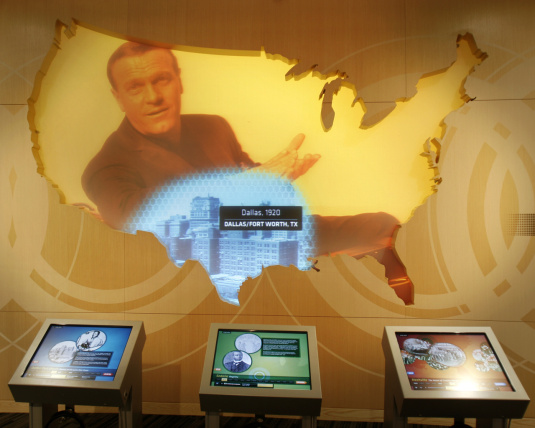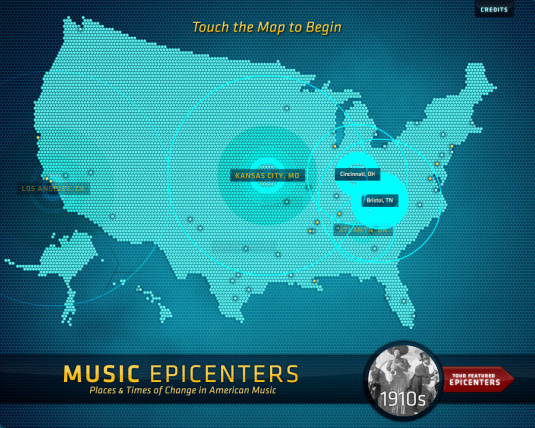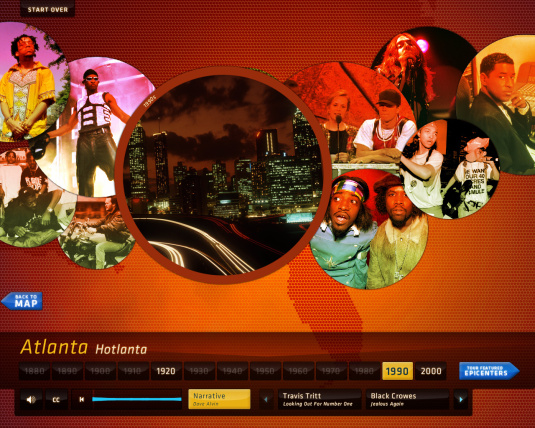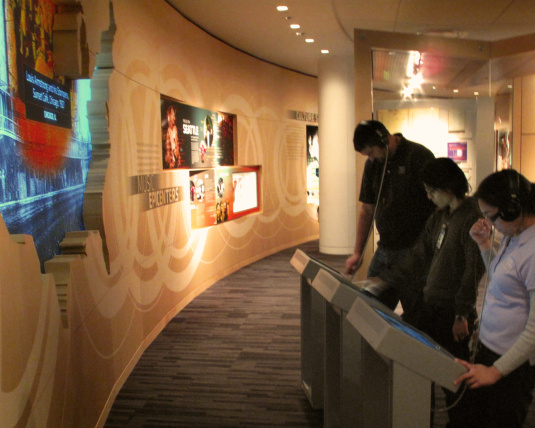Music Epicenters
Three interactive stations present the cities and people that changed the sound of American music since the 1880s, while a dynamic projection of the United States plots visitor choices of musical epicenters overhead.
Three stations surround a 10-foot, cut-out map of the United States on which historical, music-related images dynamically come into focus, drawing visitors across the museum to investigate a wealth of American music history. The viewing and listening stations are portals into America’s Music Epicenters—the birthplaces of original American music. Exploring the stations’ U.S. maps, visitors can choose epicenters of significance from the 1880s to the present day, read accounts of the music shaped at these locations, watch archival videos, and play songs representing these moments in musical development. As visitors explore the musical epicenters at the stations, their stops activate the overhead map: colorful, concentric circles and relevant images emanate from the selected cities, engaging passersby or observers in the experience as well. Music Epicenters is a fun and engaging experience that illustrates the historical significance of America’s role in the evolution of music over the last century.
